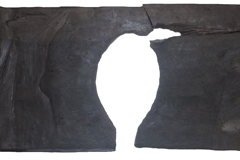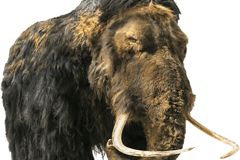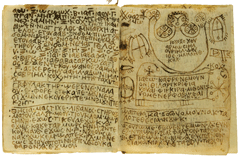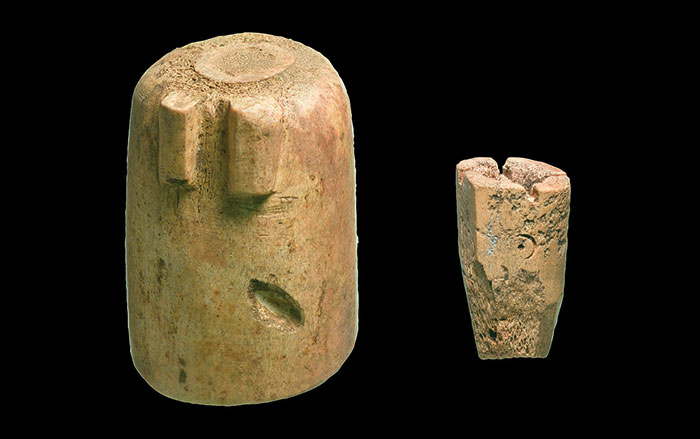
NEW JERSEY

NEW JERSEY: While building a wall to protect coastline hit hard by Hurricane Sandy, workers encountered the remains of what appears to be a 19th-century shipwreck. Authorities have decided not to disturb the site further, but a telling artifact suggests that it might be the remains of Ayrshire, a Scottish brig full of Irish and English immigrants that went down in a storm in 1850. The artifact could be part of a locally invented pulley system—like an old-fashioned clothesline—that was used to rescue almost all the passengers. —Samir S. Patel

TRINIDAD AND TOBAGO

TRINIDAD AND TOBAGO: In 1677, the French and the Dutch fought over strategically important Rockley Bay in Tobago. By the time the smoke cleared, 2,000 men were dead and 14 ships sunk. Until now, not a single ship has been discovered there. Marine archaeologists looking for evidence of the battle have found a concentration of seven cannons, 72 clay pipes, four forks, and a Westerwald stoneware jug depicting Alexander, David, and Joshua. The evidence points to Huis te Kruiningen, a 130-foot-long Dutch warship that was scuttled to avoid capture by the French. —Samir S. Patel

CHILE

CHILE: The people of Rapa Nui (Easter Island) migrated to their remote South Pacific home from the west around a.d. 1200. Analysis of the genes of 27 descendants of those who created the famed moai statues confirms Polynesian ancestry, and also reveals European and Native American genetic markers. The European traits almost surely date to after European contact in 1722. The same may be true of the Native American genes, but statistical analysis suggests the Polynesian natives could have encountered Native Americans as early as 1280. This is the first human genetic evidence of such contact with the South American mainland.

PERU

PERU: The Inca are still praised today for their intricate, polygonal stone masonry in which irregular blocks of stone were carved to fit together like a giant geometric puzzle. One of the most famous examples of this is the 12-angle stone on the side of a narrow street in Cusco, cut precisely to fit in among other stone blocks. Now, hundreds of miles away, it has been one-upped. A 13-angle stone has been found in a water and irrigation system in Huancavelica, southeast of Lima. —Samir S. Patel

ENGLAND

ENGLAND: In 1981, archaeologists excavating the remains of Mary Rose, the early-16th-century warship that sank near the Isle of Wight in 1545, found the remains of the ship’s dog, which they nicknamed “Hatch.” Because a penis bone was never found, it was assumed that Hatch had been female, but new genetic analysis of material from one of the canine’s teeth show that “she” was a “he”—and that he had brown fur and was related to modern Jack Russell terriers. —Samir S. Patel

CZECH REPUBLIC

CZECH REPUBLIC: The people of the Upper Paleolithic settlement at Predmostí ate a lot of mammoth, according to a new study, and gave their dogs reindeer and musk ox meat. The work, which examined isotopes in bone collagen for clues to the diet of the Gravettian people 30,000 years ago, shows that carnivores, such as bears and wolves, also ate mammoth meat. Dogs, however, did not, which is a surprise, considering how much mammoth meat the people had around. This suggests that the dogs were restrained, and likely used more for transportation than hunting.

EGYPT

EGYPT: A 20-page parchment codex in a museum collection in Australia has been translated and found to contain a variety of spells. Written in Coptic 1,300 years ago, it contains a mixture of Orthodox Christian and Sethian traditions, the latter referring to a group that idolized Seth, the third son of Adam and Eve, and had died out by the time the codex was written. Among the spells: “Love charm: Say the formula on wine. Let them drink,” and “Someone who is possessed: Say the formula on linseed oil and pitch. Anoint them.” —Samir S. Patel

CHINA

CHINA: According to a new study of more than 50 sites across the Tibetan Plateau, barley was essential to life at high elevation. Nomadic people had traversed the region for thousands of years, and around 5,200 years ago they began to settle. But even then they did not live more than 8,000 feet above sea level. Around 3,600 years ago they moved to higher elevations, up to 11,000 feet. The researchers believe that the introduction of barley, which is frost-tolerant, was the key to living on the roof of the world. —Samir S. Patel

INDONESIA

INDONESIA: The shell of a freshwater mussel excavated in Java in the 1890s by Eugène Dubois, the first to find hominid remains outside of Africa, may hold the world’s earliest known engraving. Researchers believe that the zigzag pattern on the shell was carved by Homo erectus around 500,000 years ago—at least 300,000 years before the next-oldest known engravings. This suggests that there is a great deal we still don’t know about the mental and physical capabilities of these early humans.—Samir S. Patel

KIRIBATI

KIRIBATI: Could a piece of aluminum finally crack one of the 20th century’s greatest mysteries? In July 1937, famed pilot Amelia Earhart and navigator Fred Noonan disappeared over the Pacific Ocean without a trace. Various suggestive artifacts have turned up on uninhabited Nikumaroro Island, where Earhart and Noonan may have crash-landed. One of these items is a sheet of aluminum that some now think matches a patch that was put on Earhart’s plane during a stop in Miami. More investigation of the island is planned.










